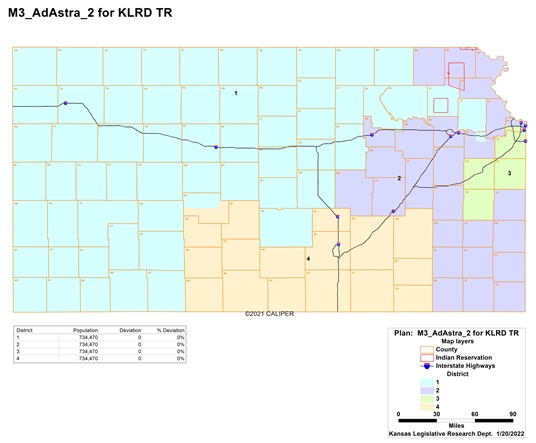Rural-to-urban shift requires House, Senate power shift to Johnson County
by Tim Carpenter, Kansas Reflector
Topeka — The redistricting showdown between majority Republicans and minority Democrats shifted Monday to the House with introduction of the GOP’s map accommodating a decade’s worth of rural-to-urban population shift and adhering to the quest for partisan political advantage.
The House GOP map of 125 districts introduced in the House Federal and State Affairs Committee during a 50-second exchange followed last week’s production of proposed Republican and Democratic maps for aligning 40 districts of the Kansas Senate.
Under the Kansas Constitution, state legislators must redraw House, Senate, U.S. House and state Board of Education districts every 10 years to make them roughly equal in population. The Legislature’s controversial map changing the state’s four U.S. House districts is tied up on lawsuits.
Rep. Chris Croft, the Overland Park Republican chairman of the House Redistricting Committee, convened the panel but didn’t dive into details of the proposed House map. It is expected to be posted by 5 p.m. Monday to the Kansas Legislative Research Department’s webpage devoted to redistricting.
“We’re not going to talk about the map right now because there are some discussions that are still ongoing,” Croft said.
He anticipated the committee’s public hearing on the GOP map or alternatives would occur Wednesday followed by committee votes Thursday or Friday. During the committee’s 12-minute meeting Monday, members discussed the potential of renumbering the 125 House districts to restore the traditional sequential assignment of district numbers from low in eastern Kansas to high in western Kansas.
Kansas City, Kansas, Rep. Tom Burroughs, D-33rd Dist., the ranking Democrat on the House committee, said he anticipated Democrats or others would introduce alternative maps for adjustment of House district boundaries.
The incarnation proposed Croft would cannibalize the district served by Rep. Steven Johnson, who is not seeking re-election but campaigning for the GOP nomination as state treasurer.
Johnson’s constituents would be scattered among several other central Kansas districts held by Republicans that lost significant population based on the latest U.S. Census court. This change would allow for a new district in Johnson County, the state’s population magnet.
“I regret that being a byproduct of me running for treasurer,” Johnson said. “Somebody has to go, The fact that I was already gone made that an easier choice.
Rep. Stephanie Clayton, D-Overland Park, said the final House map should adhere to the principle that areas of Kansas losing population should have less representation.
“Areas that gain population should gain representation,” said Clayton, a member of the redistricting committee. “People vote, not empty space.”
On Friday, three strategies for redrawing district boundaries for the Kansas Senate were introduced by Senate Republicans, Senate Democrats and the Kansas League of Women Voters. The Senate is expected to have a committee hearing Tuesday on redistricting and move it to the full Senate for a vote.
Under the map endorsed by Senate President Ty Masterson, Sen. Michael Fagg, R-El Dorado, would have to run against Sen. Rick Wilborn, R-McPherson. Wilborn, chair of the Senate Redistricting Committee, may not seek re-election in 2024, which would clear a path for Fagg.
The Senate GOP map would put Sen. Tom Holland, D-Baldwin City, in the same district with Sen. Beverly Gossage, R-Eudora. In addition, a new district would be added in Johnson County and a fourth district would be created in Shawnee County.
Sen. Dinah Sykes, the Lenexa Democrat leader in the Senate, introduced an “Eisenhower” map that would preserve core Senate districts in place since 2012.
“The map we adopt this year will determine the political dynamics of the Kansas Senate for the next decade,” she said. “The Eisenhower map is the product of a fair, collaborative process faithful to the guidelines established by the Legislature. It keeps our districts, and those partisan dynamics, largely the same.”
Kansas Reflector stories, www.kansasreflector.com, may be republished online or in print under Creative Commons license CC BY-NC-ND 4.0.
See more at https://kansasreflector.com/2022/03/14/republicans-introduce-proposed-redistricting-map-for-kansas-house-democrats-on-hold/.

